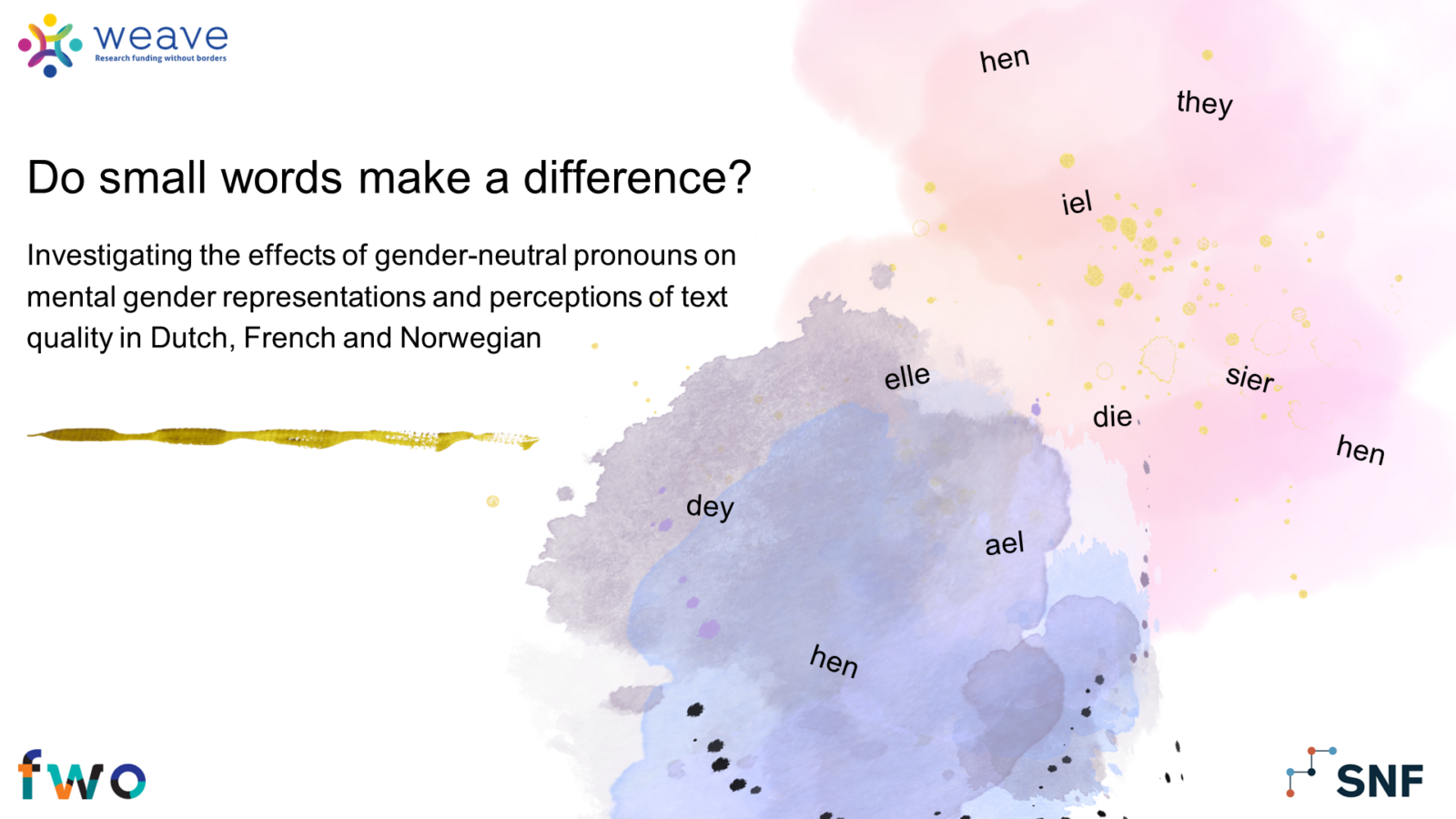
Although gender-neutral 3rd person pronouns (3PPs) are increasingly appearing in media discourse, studies of how readers interpret and evaluate them are currently still scarce. This project therefore aims at conducting a series of experimental studies in three languages in which gender-neutral 3PPs have recently been introduced, viz. Dutch, French and Norwegian. We will investigate three possible uses of gender-neutral 3PPs in these three languages: (1) for reference to nonbinary individuals, (2) for generic reference and (3) for specific gender-hiding reference. For all 3 types of usage we will investigate the effects of gender-neutral 3PPs on readers’ mental gender representations and on their perceptions of text quality. In assessing these effects, we will take into account respondents’ familiarity with gender-neutral 3PPs and their attitudes towards nonsexist language and the gender binary. We will also investigate the influence of cueing (i.e. explicitly drawing the reader’s attention to the gender-neutral referential strategy in the text). In this way, we will assess the potential of gender-neutral 3PPs in Dutch, French and Norwegian. By comparing three different languages, we will get into view cross-linguistic and cross-cultural differences that affect the chances at success of gender-neutral 3PPs. Our ultimate goal is to inform theories on language reform and prescriptivism, and to contribute to an empirical basis for debates on gender-inclusive language use.